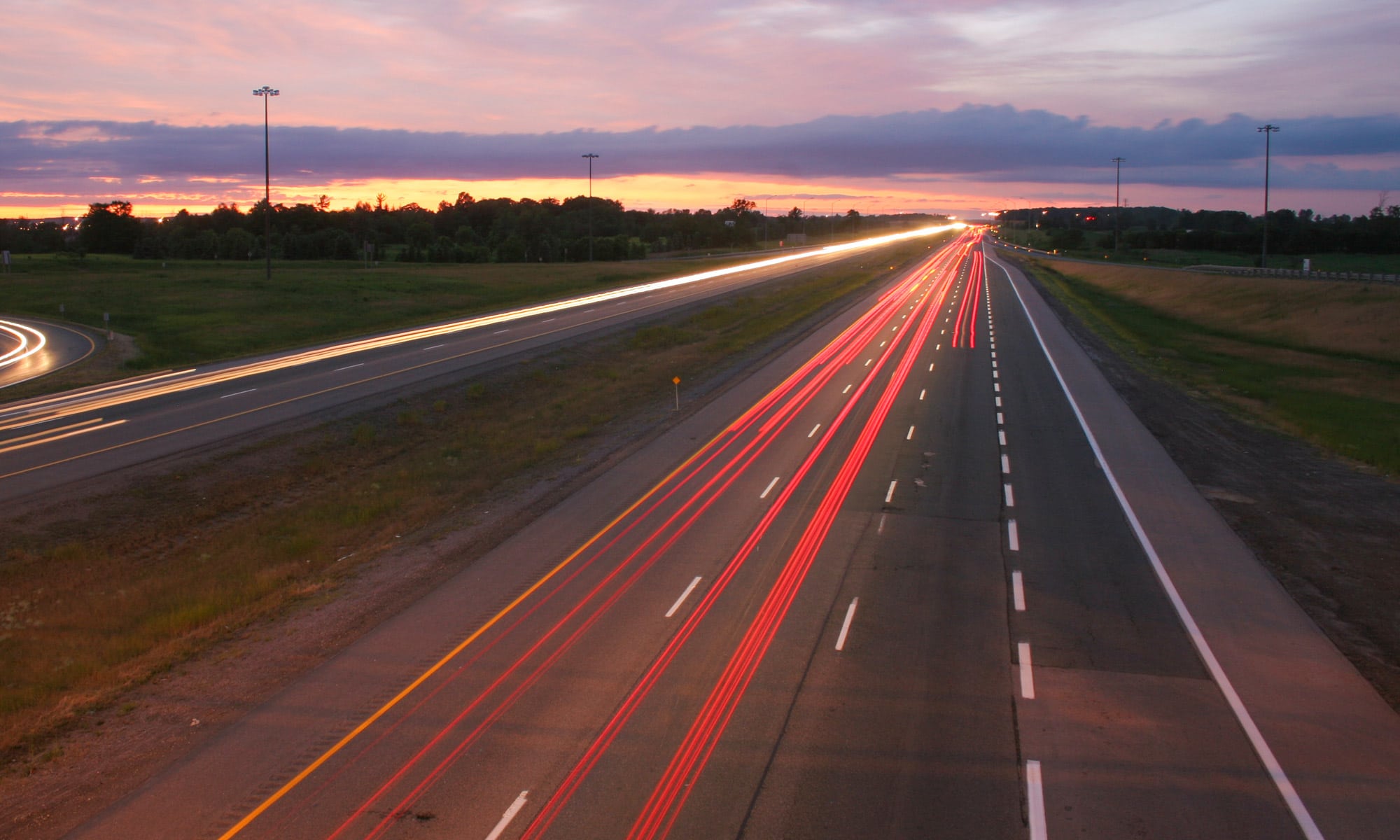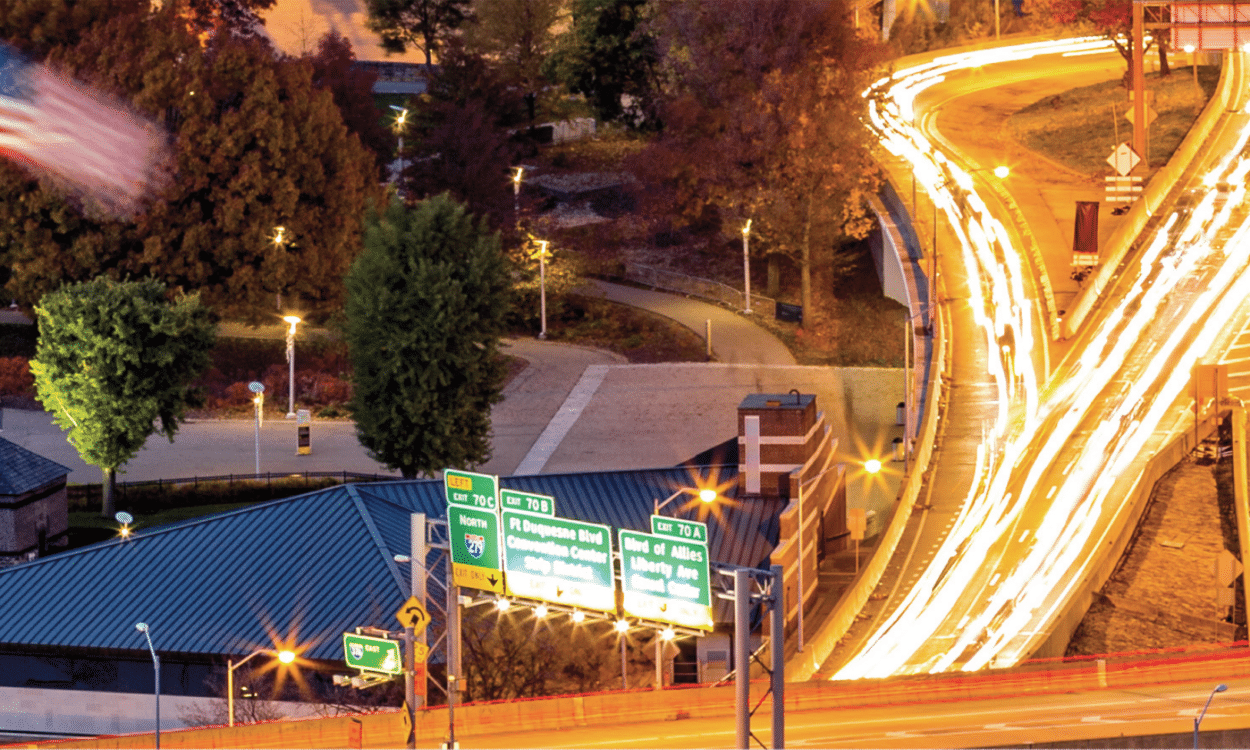For years, the Iowa DOT has collected traffic data using sensors embedded in the pavement or mounted at the side of the road or on other structures such as bridges. The data is very useful to both travelers wanting real-time traffic speeds and transportation planners looking at ways to improve the system.
Until recently, these sensors were the most complete and timely way to gather traffic information. Unfortunately this method of collecting information left a gap in our data. How do we get traffic data in rural areas where we don’t have sensors?

The Challenge
On the never-ending quest to find new and better ways to collect and analyze data, Iowa DOT data managers began to explore options available from global positioning system (GPS) enabled devices. Using GPS data, third-party traffic providers are harnessing this valuable resource and packaging it for use by state DOTs, among others.
Solution
After carefully investigating third-party options, the Iowa DOT entered into a contract with INRIX® in March 2014 to gather traffic analytics information on Iowa roadways.
INRIX collects information from mobile phones, connected cars, trucks, delivery vans, and other fleet vehicles equipped with GPS locator devices. This “probe data” can tell the Iowa DOT real-time traffic speed information for our roadways that is likely more accurate and covers a broader area than the data provided by the current sensors. Unlike the current sensors, the GPS data does not include traffic volumes, just speeds. Just like sensor data, probe data can be used to generate alerts and maps and calculate travel times. Sinclair Stolle, Iowa DOT’s Traveler Information Program coordinator, said, “The biggest difference between traffic sensor data and the third-party traffic data is the coverage area. Data from INRIX covers many more roadways – 8,758 centerline miles in Iowa including more ramps and interchanges. That’s a huge increase in the amount of data we can access without any of the cost of installation, configuration, and maintenance of sensors. We expect the probe data will provide information in areas where we have not been able to collect traffic information in the past.”
Results and Improvements
The real time data is used to inform travelers of conditions that can impact their travel plans when bottlenecks or delays occur during rush hour, because of an crash, a big game in Ames or Iowa City or a major storm and help them make decisions on when it is best to travel or what roads to take.
The real-time data also assists the Iowa DOT’s Traffic Operations Center (TOC) in balancing traffic when needed during a traffic incident. Stolle said, “The TOC has access to maps that show congestion in a way that is quick and easy to understand. TOC operators can use those to post messages to travelers like ‘Expect delays’ related to an event.”
Data is stored and analyzed later to assist traffic engineers in planning for future transportation needs and after-action reports after a major traffic incident. The procurement of this traffic data service also included historical data from the vendor to assist Iowa DOT planners. Sam Hiscocks, from the Office of Systems Planning, and his team are working with that historical data to identify potential bottlenecks on Iowa’s highways. Hiscocks said, “We can use the data to create a formula and figure out where bottlenecks are regularly occurring. We can map those out and then explore ways to eliminate the bottlenecks.” Ultimately the goal is keeping Iowa’s roadways moving in a safe and reliable manner.
“Data from INRIX covers significantly more roadways – 8,758 centerline miles in Iowa including more ramps and interchanges. That’s a huge increase in the amount of data we can access without any of the cost of installation, configuration, and maintenance of sensors.”
Hiscocks says his office is also using the historical data to find out how these bottlenecks and other traffic slowdowns impact freight movements. He said, “We can overlay the data we collect on truck traffic with the traffic speed data from INRIX and highlight the areas that have both bottlenecks and more than 30 percent truck traffic. We held a meeting with the Iowa Freight Advisory Council in June where we presented this information and gathered feedback. The council was invited to prioritize the identified bottlenecks and suggest additional locations to be considered. The overall feedback was positive.”
As for the cost of the data, Stolle said that is part of the evaluation process of the current contract with INRIX. She said, “We will be analyzing the cost of the data versus the cost of installing and maintaining a physical sensor system. We will also look at the accuracy of the probe data versus the sensor data to assure we are getting the best value for the dollars spent.”



